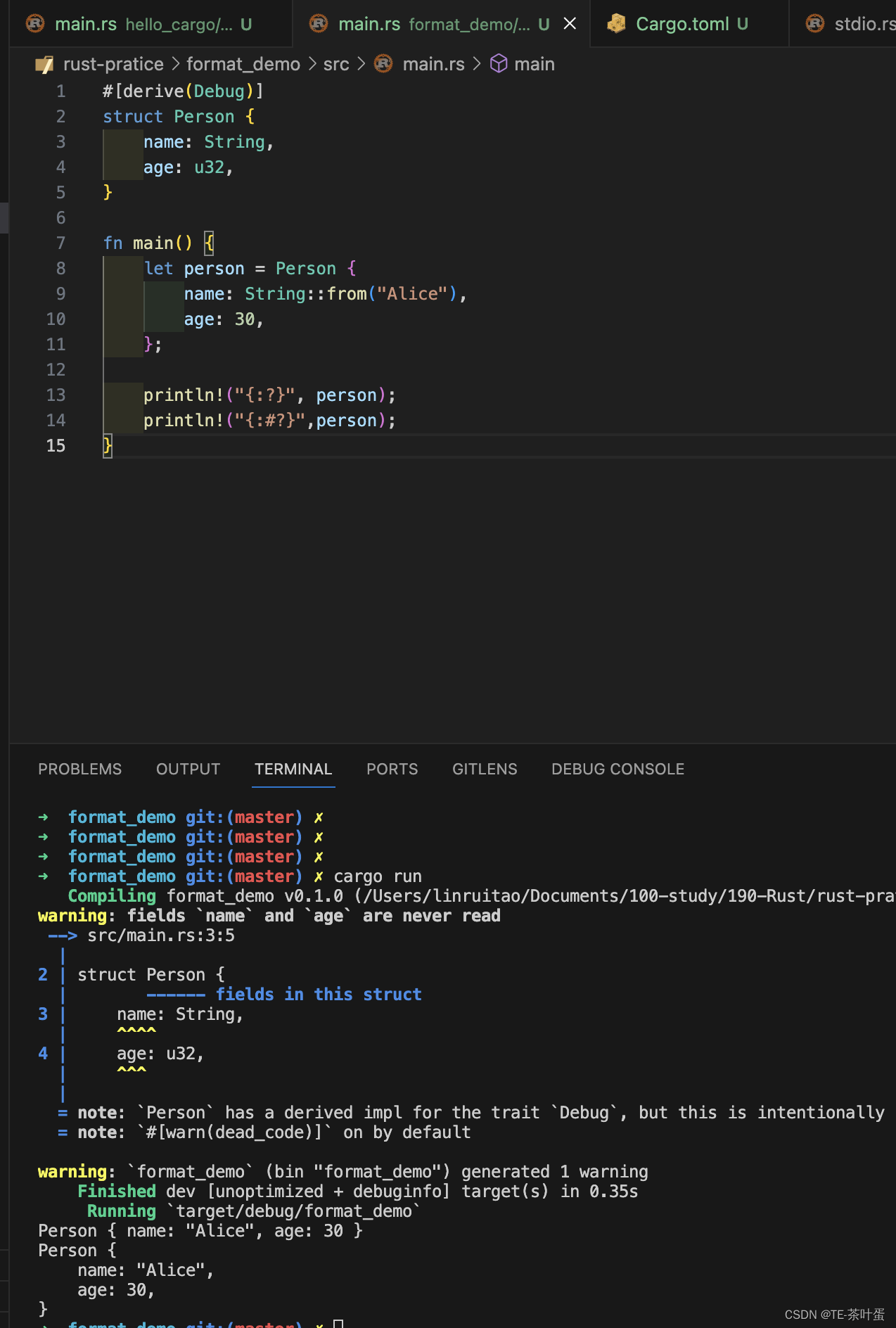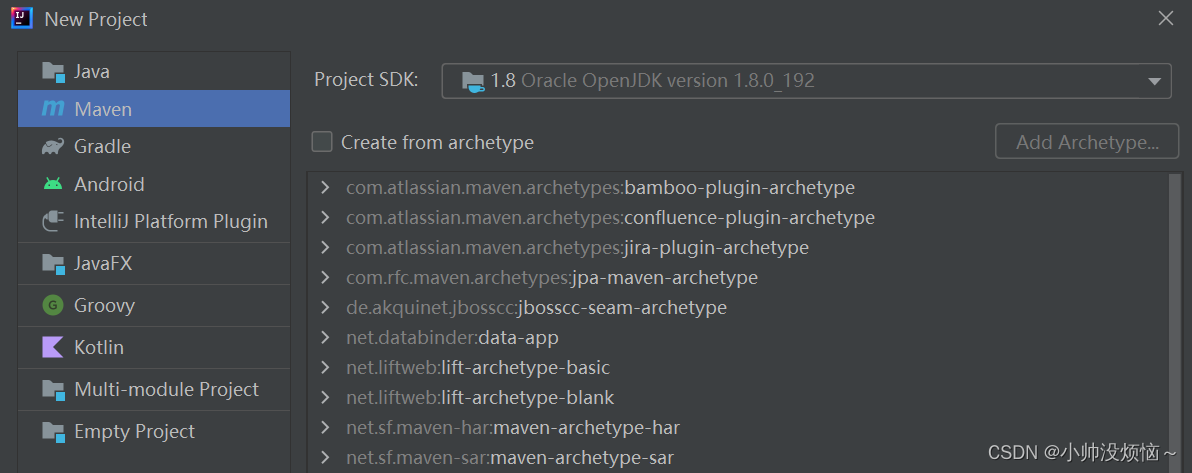一、日期和时间的格式化
1、原生方法
//Date 对象有一个 toLocaleString 方法,该方法可以根据本地时间和地区设置格式化日期时间。例如:
//toLocaleString 方法接受两个参数,第一个参数是地区设置,第二个参数是选项,用于指定日期时间格式和时区信息。
const date = new Date();
console.log(date.toLocaleString('en-US', { timeZone: 'America/New_York' })); // 2/16/2023, 8:25:05 AM
console.log(date.toLocaleString('zh-CN', { timeZone: 'Asia/Shanghai' })); // 2023/2/16 上午8:25:05
//Intl.DateTimeFormat 对象能使日期和时间在特定的语言环境下格式化。可以使用该对象来生成一个格式化日期时间的实例,并根据需要来设置日期时间的格式和时区。例如:
//可以在选项中指定需要的日期时间格式,包括年、月、日、时、分、秒等。同时也可以设置时区信息。
const date = new Date();
const formatter = new Intl.DateTimeFormat('en-US', {
timeZone: 'America/New_York',
year: 'numeric',
month: 'numeric',
day: 'numeric',
hour: 'numeric',
minute: 'numeric',
second: 'numeric',
});
console.log(formatter.format(date)); // 2/19/2023, 9:17:40 AM
const dateCN = new Date();
const formatterCN = new Intl.DateTimeFormat('zh-CN', {
timeZone: 'Asia/Shanghai',
year: 'numeric',
month: '2-digit',
day: '2-digit',
hour: '2-digit',
minute: '2-digit',
second: '2-digit',
});
console.log(formatterCN.format(dateCN)); // 2023/02/19 22:17:40
2、使用字符串操作方法
//可以使用字符串操作方法来将日期时间格式化为特定格式的字符串。例如:
const date = new Date();
const year = date.getFullYear().toString().padStart(4, '0');
const month = (date.getMonth() + 1).toString().padStart(2, '0');
const day = date.getDate().toString().padStart(2, '0');
const hour = date.getHours().toString().padStart(2, '0');
const minute = date.getMinutes().toString().padStart(2, '0');
const second = date.getSeconds().toString().padStart(2, '0');
console.log(`${year}-${month}-${day} ${hour}:${minute}:${second}`); // 2023-02-16 08:25:05
//以上代码使用了字符串模板和字符串操作方法,将日期时间格式化为 YYYY-MM-DD HH:mm:ss 的格式。可以根据实际需要来修改格式。
3、自定义格式化函数
//可以编写自定义函数来格式化日期时间。例如:
function formatDateTime(date) {
const year = date.getFullYear();
const month = date.getMonth() + 1;
const day = date.getDate();
const hour = date.getHours();
const minute = date.getMinutes();
const second = date.getSeconds();
return `${year}-${pad(month)}-${pad(day)} ${pad(hour)}:${pad(minute)}:${pad(second)}`;
}
function pad(num) { return num.toString().padStart(2, '0')}
const date = new Date();
console.log(formatDateTime(date)); // 2023-02-16 08:25:05
//以上代码定义了一个 formatDateTime 函数和一个 pad 函数,用于格式化日期时间并补齐数字。可以根据需要修改格式,因此通用性较低。
【2】可指定格式的格式化函数
//下面是一个通用较高的自定义日期时间格式化函数的示例:
function formatDateTime(date, format) {
const o = {
'M+': date.getMonth() + 1, // 月份
'd+': date.getDate(), // 日
'h+': date.getHours() % 12 === 0 ? 12 : date.getHours() % 12, // 小时
'H+': date.getHours(), // 小时
'm+': date.getMinutes(), // 分
's+': date.getSeconds(), // 秒
'q+': Math.floor((date.getMonth() + 3) / 3), // 季度
S: date.getMilliseconds(), // 毫秒
a: date.getHours() < 12 ? '上午' : '下午', // 上午/下午
A: date.getHours() < 12 ? 'AM' : 'PM', // AM/PM
};
if (/(y+)/.test(format)) {
format = format.replace(RegExp.$1, (date.getFullYear() + '').substr(4 - RegExp.$1.length));
}
for (let k in o) {
if (new RegExp('(' + k + ')').test(format)) {
format = format.replace(
RegExp.$1,
RegExp.$1.length === 1 ? o[k] : ('00' + o[k]).substr(('' + o[k]).length)
);
}
}
return format;
}
//这个函数接受两个参数,第一个参数是要格式化的日期时间,可以是 Date 对象或表示日期时间的字符串,第二个参数是要格式化的格式,例如 yyyy-MM-dd HH:mm:ss。该函数会将日期时间格式化为指定的格式,并返回格式化后的字符串。
//该函数使用了正则表达式来匹配格式字符串中的占位符,然后根据对应的日期时间值来替换占位符。其中,y 会被替换为年份,M、d、h、H、m、s、q、S、a、A 分别表示月份、日期、小时(12 小时制)、小时(24 小时制)、分钟、秒、季度、毫秒、上午/下午、AM/PM。
//使用该函数进行日期时间格式化的示例如下:
const date = new Date();
console.log(formatDateTime(date, 'yyyy-MM-dd HH:mm:ss')); // 2023-02-16 08:25:05
console.log(formatDateTime(date, 'yyyy年MM月dd日 HH:mm:ss')); // 2023年02月16日 08:25:05
console.log(formatDateTime(date, 'yyyy-MM-dd HH:mm:ss S')); // 2023-02-16 08:25:05 950
console.log(formatDateTime(date, 'yyyy-MM-dd hh:mm:ss A')); // 2023-02-16 08:25:05 上午
//可以根据实际需要修改格式化的格式,以及支持更多的占位符和格式化选项。
4、使用第三方库
//除了原生的方法外,还有很多第三方库可以用来格式化日期时间,例如 Moment.js 和 date-fns 等。这些库提供了更多的日期时间格式化选项,并且可以兼容不同的浏览器和环境。
const date = new Date();
console.log(moment(date).format('YYYY-MM-DD HH:mm:ss')); // 2023-02-16 08:25:05
console.log(dateFns.format(date, 'yyyy-MM-dd HH:mm:ss')); // 2023-02-16 08:25:05
//以上是几种常用的日期时间格式化方法,在进行日期时间格式化时,可以使用原生的方法、自定义函数或第三方库,选择合适的方法根据实际需要进行格式化。
二、日期和时间的其它常用处理方法
1、创建 Date 对象
要创建一个 Date 对象,可以使用 new Date(),不传入任何参数则会使用当前时间。也可以传入一个日期字符串或毫秒数,例如:
const now = new Date(); // 当前时间
const date1 = new Date("2022-01-01"); // 指定日期字符串
const date2 = new Date(1640995200000); // 指定毫秒数
2、日期和时间的获取
const date = new Date();
const year = date.getFullYear(); // 年份,例如 2023
const month = date.getMonth(); // 月份,0-11,0 表示一月,11 表示十二月
const day = date.getDate(); // 日期,1-31
const hour = date.getHours(); // 小时,0-23
const minute = date.getMinutes(); // 分钟,0-59
const second = date.getSeconds(); // 秒数,0-59
const millisecond = date.getMilliseconds(); // 毫秒数,0-999
const weekday = date.getDay(); // 星期几,0-6,0 表示周日,6 表示周六
3、日期和时间的计算
?可以使用 Date 对象的 set 方法来设置日期和时间的各个部分,也可以使用 get 方法获取日期和时间的各个部分,然后进行计算。例如,要计算两个日期之间的天数,可以先将两个日期转换成毫秒数,然后计算它们之间的差值,最后将差值转换成天数,例如:
const date1 = new Date("2022-01-01");
const date2 = new Date("2023-02-16");
const diff = date2.getTime() - date1.getTime(); // 毫秒数
const days = diff / (1000 * 60 * 60 * 24); // 天数
4、日期和时间的比较
可以使用 Date 对象的 getTime() 方法将日期转换成毫秒数,然后比较两个日期的毫秒数大小,以确定它们的顺序。例如,要比较两个日期的先后顺序,可以将它们转换成毫秒数,然后比较它们的大小,例如:
const date1 = new Date("2022-01-01");
const date2 = new Date("2023-02-16");
if (date1.getTime() < date2.getTime()) {
console.log("date1 在 date2 之前");
} else if (date1.getTime() > date2.getTime()) {
console.log("date1 在 date2 之后");
} else {
console.log("date1 和 date2 相等");
}
5、日期和时间的操作
可以使用 Date 对象的一些方法来进行日期和时间的操作,例如,使用 setDate() 方法设置日期,使用 setHours() 方法设置小时数,使用 setTime() 方法设置毫秒数等等。例如,要将日期增加一天,可以使用 setDate() 方法,例如:
const date = new Date();
date.setDate(date.getDate() + 1); // 增加一天
console.log(date.toLocaleDateString()); // 输出增加一天后的日期
6、获取上周、本周、上月、本月和本年的开始时间和结束时间
// 获取本周的开始时间和结束时间
function getThisWeek() {
const now = new Date();
const day = now.getDay() === 0 ? 7 : now.getDay(); // 将周日转换为 7
const weekStart = new Date(now.getFullYear(), now.getMonth(), now.getDate() - day + 1);
const weekEnd = new Date(now.getFullYear(), now.getMonth(), now.getDate() + (6 - day) + 1);
return { start: weekStart, end: weekEnd };
}
//获取时间区间的示例:
//const thisWeek = getThisWeek();
//console.log(thisWeek.start); // 本周的开始时间
//console.log(thisWeek.end); // 本周的结束时间
// 获取上周的开始时间和结束时间
function getLastWeek() {
const now = new Date();
const day = now.getDay() === 0 ? 7 : now.getDay(); // 将周日转换为 7
const weekStart = new Date(now.getFullYear(), now.getMonth(), now.getDate() - day - 6);
const weekEnd = new Date(now.getFullYear(), now.getMonth(), now.getDate() - day);
return { start: weekStart, end: weekEnd };
}
// 获取本月的开始时间和结束时间
function getThisMonth() {
const now = new Date();
const monthStart = new Date(now.getFullYear(), now.getMonth(), 1);
const monthEnd = new Date(now.getFullYear(), now.getMonth() + 1, 0);
return { start: monthStart, end: monthEnd };
}
// 获取上月的开始时间和结束时间
function getLastMonth() {
const now = new Date();
const monthStart = new Date(now.getFullYear(), now.getMonth() - 1, 1);
const monthEnd = new Date(now.getFullYear(), now.getMonth(), 0);
return { start: monthStart, end: monthEnd };
}
// 获取本年的开始时间和结束时间
function getThisYear() {
const now = new Date();
const yearStart = new Date(now.getFullYear(), 0, 1);
const yearEnd = new Date(now.getFullYear(), 11, 31);
return { start: yearStart, end: yearEnd };
}
7、根据出生日期计算年龄
function calculateAge(birthDate) {
const birthYear = birthDate.getFullYear();
const birthMonth = birthDate.getMonth();
const birthDay = birthDate.getDate();
const now = new Date();
let age = now.getFullYear() - birthYear;
if (now.getMonth() < birthMonth || (now.getMonth() === birthMonth && now.getDate() < birthDay)) {
age--;
}
// 检查闰年
const isLeapYear = (year) => (year % 4 === 0 && year % 100 !== 0) || year % 400 === 0;
const isBirthLeapYear = isLeapYear(birthYear);
// 调整闰年的年龄
if (isBirthLeapYear && birthMonth > 1) {
age--;
}
if (isLeapYear(now.getFullYear()) && now.getMonth() < 1) {
age--;
}
return age;
}
//使用这个函数计算年龄的示例:
//const birthDate = new Date("1990-01-01");
//const age = calculateAge(birthDate);
//console.log(age); // 33
8、其他相关的知识点
在使用 Date 对象时,需要注意以下几点:
(1)月份从 0 开始,0 表示一月,11 表示十二月;
(2)getDate() 方法返回的是日期,而 getDay() 方法返回的是星期几;
(3)Date 对象的年份是完整的四位数,例如 2023;
(4)使用 new Date() 创建 Date 对象时,返回的是当前时区的时间,如果需要使用 UTC 时间,可以使用 new Date(Date.UTC())
原文地址:https://blog.csdn.net/weixin_53791978/article/details/131348177
本文来自互联网用户投稿,该文观点仅代表作者本人,不代表本站立场。本站仅提供信息存储空间服务,不拥有所有权,不承担相关法律责任。
如若转载,请注明出处:http://www.7code.cn/show_34558.html
如若内容造成侵权/违法违规/事实不符,请联系代码007邮箱:suwngjj01@126.com进行投诉反馈,一经查实,立即删除!







